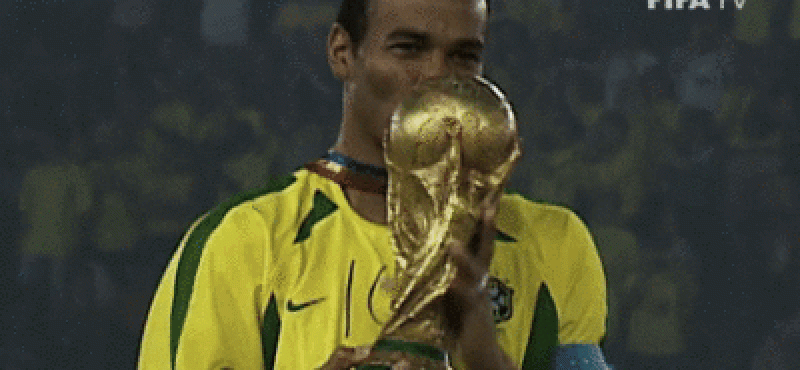Isn’t it annoying when your favorite team finally scores, but it is ruled out as an offside? Or when Ronaldo celebrates a goal, only to find out, it wasn’t he who scored it? (Let’s be honest, his head did NOT touch the ball.)
The offside rule has existed for over 30 years. What has made these rules more susceptible to the eye this season? How are these goal infringements more easily detectable than the previous world cups? The answer is pretty simple – Artificial Intelligence.
AI has become dominant in all fields, from healthcare to gaming. Its kick-off into the football world has revolutionized the way this sport was perceived by viewers and players altogether.
AI VENTURES INTO THE WORLD OF SPORTS
Science and technology have always influenced sports since the beginning. However, in recent years, AI and its analytics have boosted their use. AI has affected sports with a power greater than Arjen Robbens’ shots and a speed faster than Mbappe’s sprint.
Modern tech has played a role in almost all aspects of sports, from recruitment to training to broadcasting. Numerous sports have adopted AI around the world to help create groundbreaking changes.
Researchers from QUT, Australia, have developed an AI system that could revolutionize how tennis is ascertained. The researchers recorded data points on tennis shots using the Hawk-Eye Ball Tracking System. This data was used in their AI system and precisely predicted how a player’s shot may play out.
If we look at fast-paced sports such as basketball, AI proved its competence on the court by gathering data sets and numbers that humans may have failed to perceive. Tracking technologies, such as SportVU, have been implemented by NBA teams to track precise details during a game.
As for Football, AI has created a whole other dimension of playing. Want to know how? Keep on reading!

INTRODUCTION OF AI INTO FOOTBALL
It comes as no revelation that Artificial Intelligence is being used in multiple ways when it comes to Football, whether we are talking about; creating lineups, boosting performance, or visualizing fouls. Known as “the beautiful game”, Football has been one of the most popular games worldwide. The game and the changes brought to it have always been tremendously dramatic. From the introduction of the goal line technology to bringing forward the SAOT technology this season, Football has deeply invested in AI to ensure fair gameplay. However, how did AI gain traction in the world of AI?
GOAL LINE TECHNOLOGY
EPTS
You must have seen those statistic pages broadcasted on the TV during half-time or post-match discussions. How is the distance covered by the player effectively measured? How do coaches monitor the fatigue levels of the players? While France lifted the trophy in 2018, they weren’t the sole winners; EPTS, too, wore its gold medal!
Developed in 2015, Electronic performance and tracking systems are technology-based tools used to collect and analyze an athlete’s performance. These systems typically use sensors and other technology to track an athlete’s movements, heart rate, and other real-time physical metrics. The data is then analyzed to provide insights into the athlete’s performance and can be used to help improve training, optimize performance, and prevent injuries.
OLOCIP
VIRTUAL ASSISTANT REFEREE
First used in the English Premier League 2018, Virtual Assistant Referees has revolutionized Football forever. A virtual assistant referee (VAR) is a technology-based system used in association football to assist match officials in making decisions. The system uses video replays and other technology to help the officials make decisions on critical incidents during the game, such as goals, penalties, and red cards.
SAOT
Introduced in this year’s FIFA World Cup Championship, Semi-Automated Offside Technology is one of the most recent additions to football AI. SAOT is a system used in association football to assist match officials in making offside decisions. The system uses technology and human input to decide whether a player is in an offside position.
AL RIHLA- A FOOTBALL WITH A BRAIN OF ITS OWN!
From electronic devices to kitchen appliances, AI has established its dominance in every sector. But could you ever imagine something as simple as a football could incorporate an Artificial Intelligence system, too? That’s right! Al Rihla, the official Football of the 2022 FIFA World Cup, has a built-in AI system.
The FIFA World Cup 2022 official match ball will include new connected ball technology, which will be used to improve the VAR (Video Assistant Referees) system by providing an unprecedented level of data and information to match officials, allowing them to make faster and more accurate decisions on the biggest stage of all.
Combined with player position data and artificial intelligence, the unique linked ball technology contributes to FIFA’s semi-automated offside technology and provides immediate VAR information to optimize decision-making.
A unique Adidas Suspension System in the centre of the ball hosts and stabilizes a 500Hz inertial measurement unit (IMU) motion sensor, providing unparalleled knowledge into every part of the ball’s movement while remaining invisible to players, not affecting its performance. An inductively charged rechargeable battery powers the sensor.
FORTY-TWO CAMERAS DECIDE THE FATE OF THIRTY-TWO TEAMS
The referee usually divides the fate of every match, right? This time, 42 additional cameras will aid the referee’s eyes. Although introduced in FIFA 2018, the VAR system will support the referee’s decision-making process.
It aids the referee’s decision-making process in game-changing moments like goals, penalty decisions, infractions leading up to a goal or penalty, ‘Red Card’ occurrences and cases of mistaken identification.
One of the critical benefits of VAR is that it can provide a clear and accurate decision to the match officials in situations where it is difficult to decide with their own eyes. For example, suppose a player is fouled in the penalty area, and the officials are unsure whether a penalty should be awarded. In that case, they can use VAR to review the incident and decide based on the video evidence.
In addition, VAR can help to reduce the number of disputes and arguments on the pitch. Because the system provides a clear and accurate decision, it can help to prevent players and coaches from arguing with the officials and can help to maintain the flow of the game.
Overall, VAR is an essential tool that can help to improve the accuracy of decision-making in association football. While it may be flawed, it effective in many cases and can help to prevent incorrect decisions from being made.
DETECTING OFFSIDE GOALS MADE EASY
SAOT is a tool to assist video match officials and on-field referees in making faster, more accurate offside decisions, which are always the most difficult to make.
It employs 12 tracking cameras positioned beneath the stadium’s roof to follow the ball and up to 29 data points on each player, including all limbs and extremities important for determining offside rulings, which are tracked 50 times per second to calculate their exact position on the pitch.
The technology offers an automated offside alert to the video match officials inside the video operation room if the ball is received by an attacker who was in an offside position when the ball was played by merging limb- and ball-tracking data and using artificial intelligence.
IS AI THE FUTURE OF FIFA?
AI has slowly been replacing jobs and has spread its roots into the world of Football. Now while AI won’t replace footballers (I mean, who wants to see robots play Football), we can expect AI to replace several sports in ensuring the smooth running of the tournament.
We can depend on AI to help make technical decisions easier or create powerful lineups. In fact, with the arrival of the metaverse into FIFA, these technologies can help make viewing the beloved game more immersive!
While AI can be seen in the future of Football, it isn’t essentially the complete future but just a part of it.`




